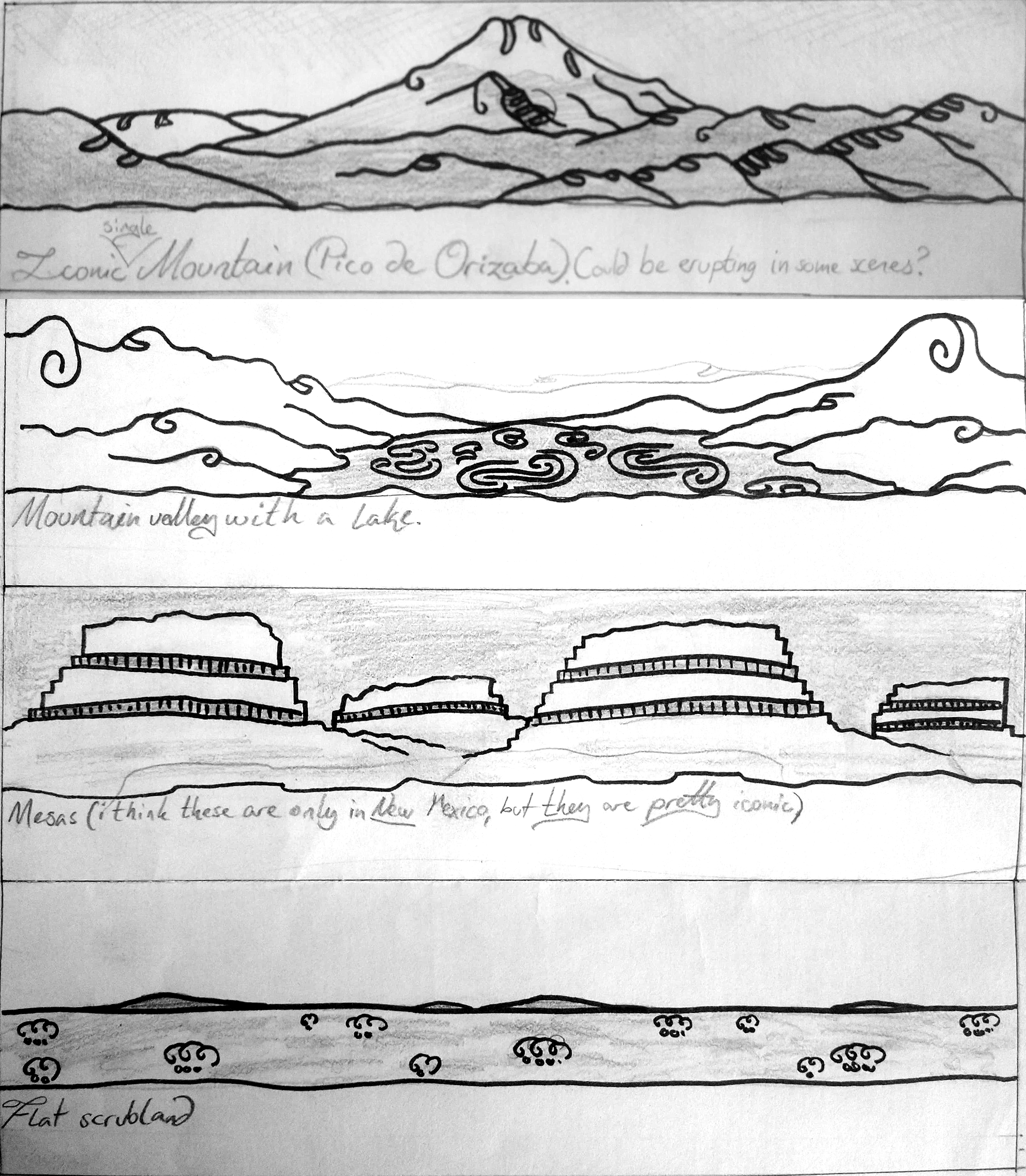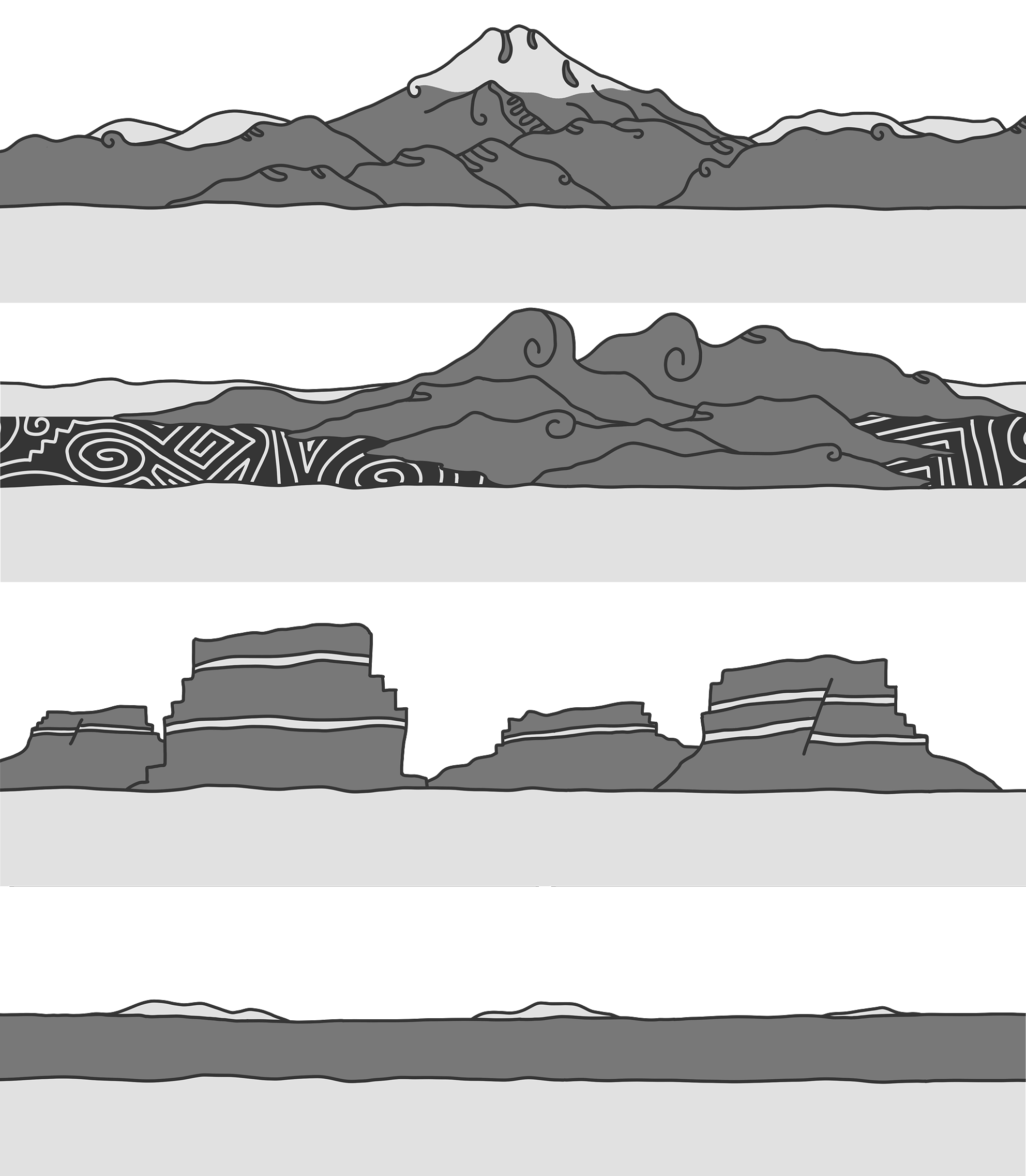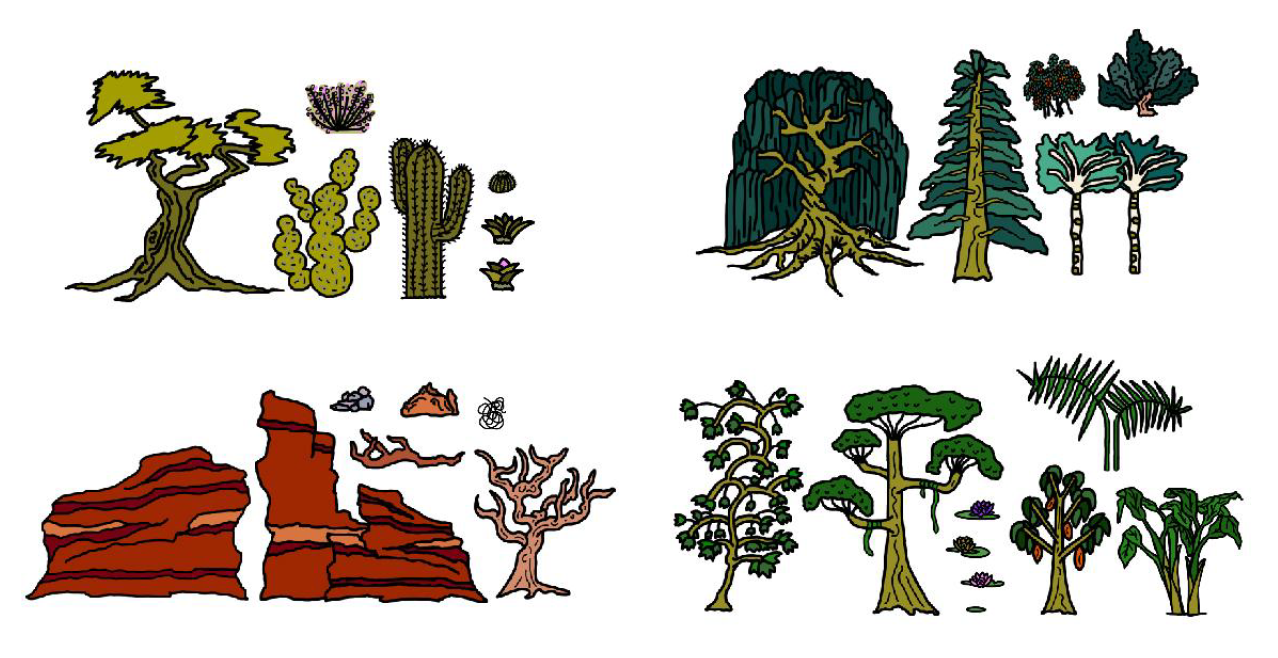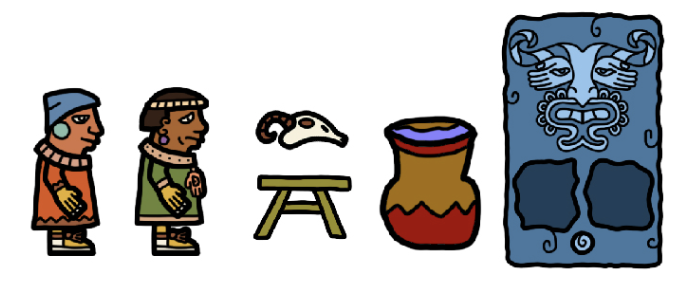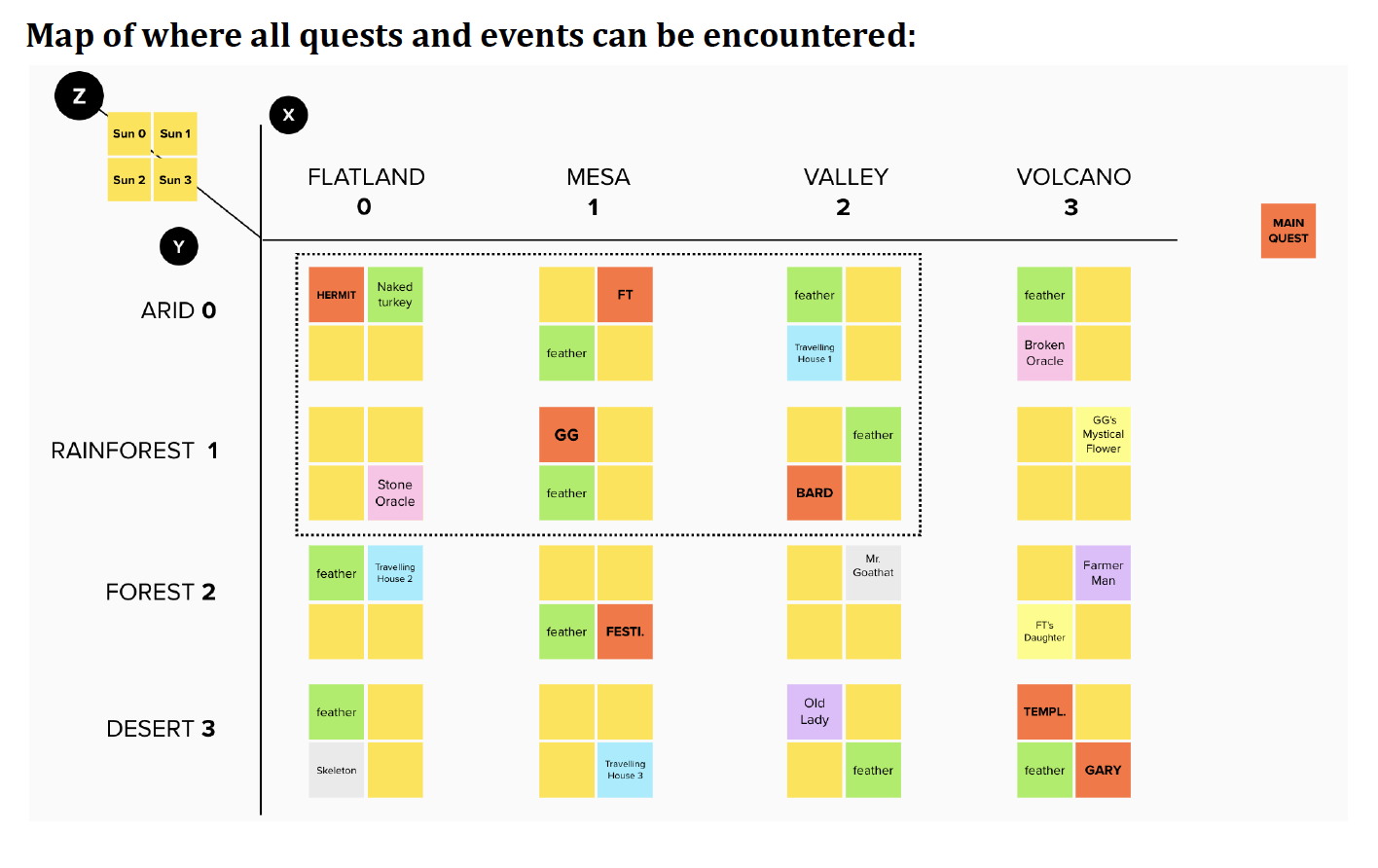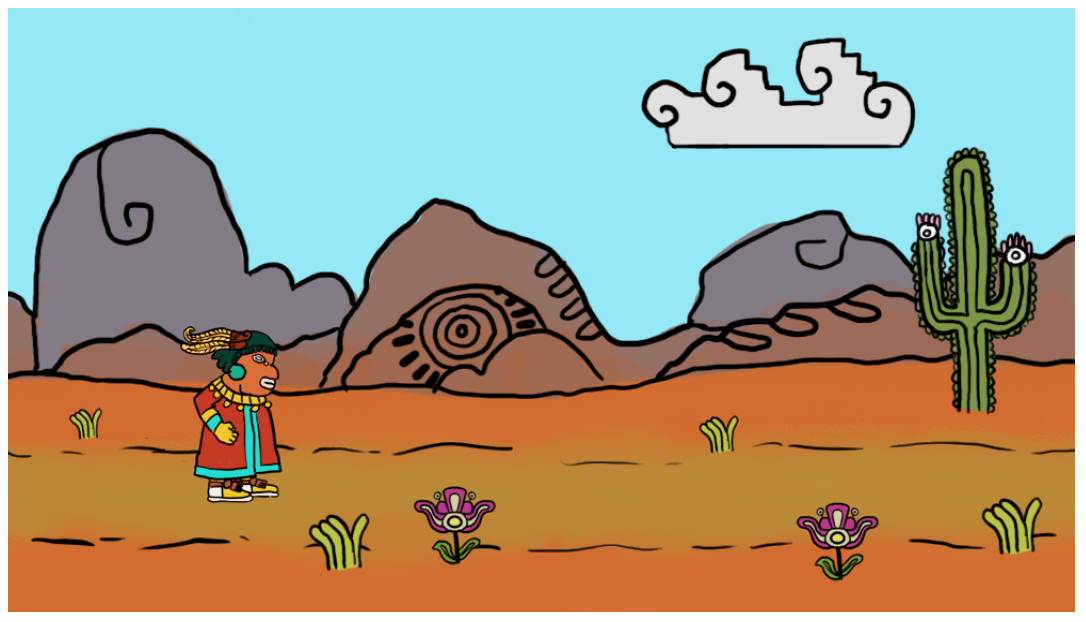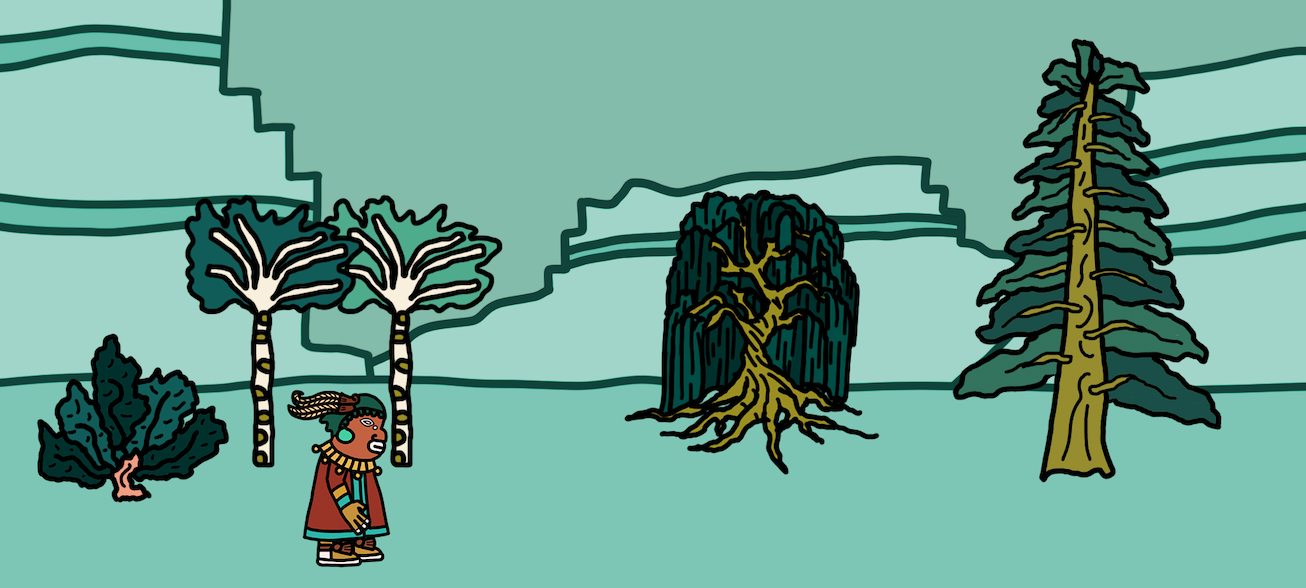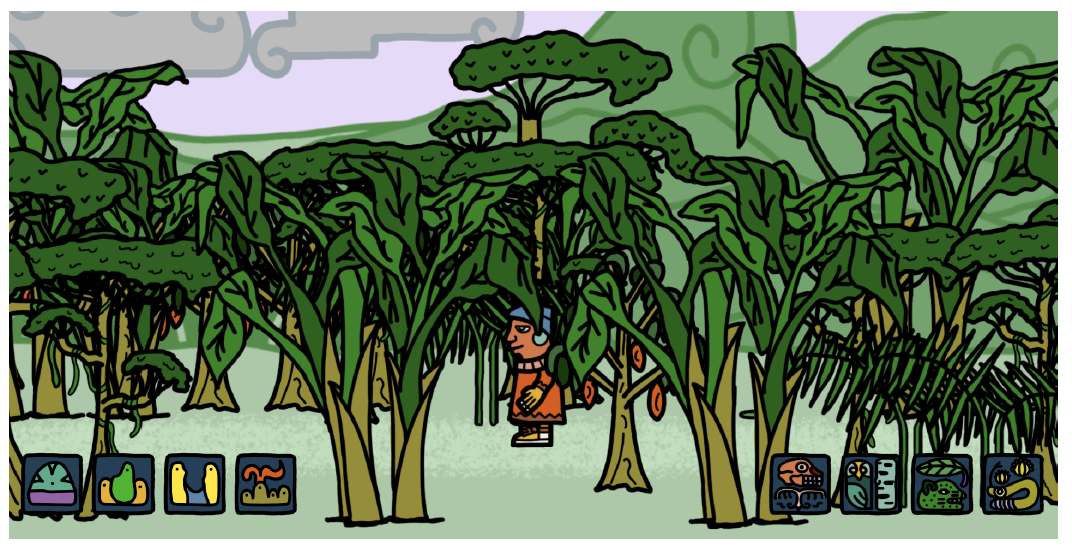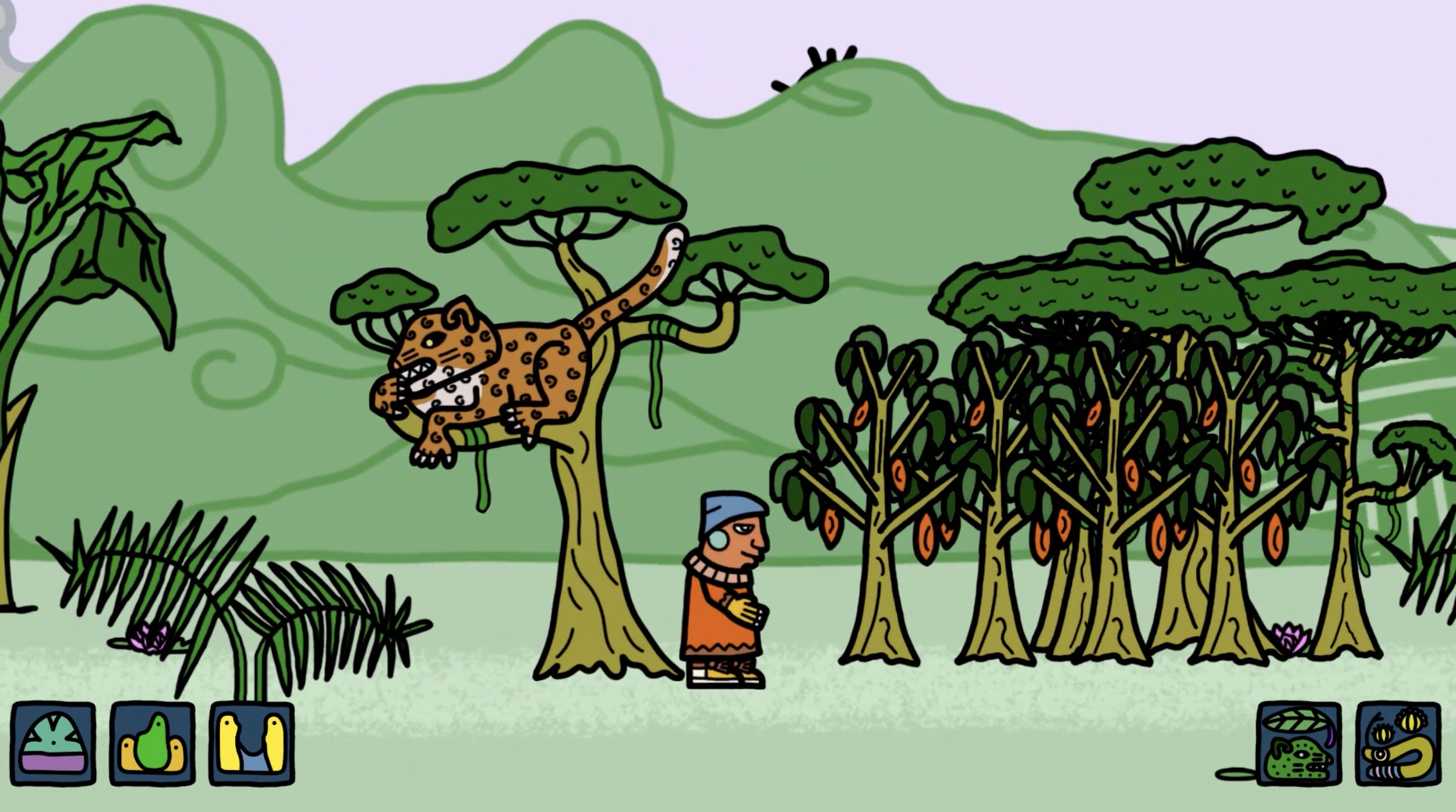
Waystone
Single-player platformer exploration video game
Designed by Sebastián Martínez Sánchez (Design Lead), Kelsey Adsitt (Sound Lead), Erdem Solakoğlu (Narrative Lead), Rasmus Klintsø Christensen (Programmer), Jesper Rabjerg (Programmer), Birk Jeberg Staanum (Art Lead), and Julie Tremblay (Producer)
Made during the MSc in Games at ITU of Copenhagen, in 2022
Exploration game where the player takes the role of Ootsa, who travels through 64 different locations through the use of glyphs. The purpose is to discover this vast world and find their lost friend. But, in the meantime, they will interact with a few stranded people along the way and get lost time and time again. Ultimately, it is a game about cartography, with a non-linear world where the player must learn to chart their own path to figure out what places have not been explored yet.
Waystone is heavily inspired by Mesoamerican art and culture, and incorporates concepts from prehispanic theology, as well as art modelled after the codices of the Nahua peoples. But Waystone is not a historical game. Rather, these influences are used to create a new world where places have been broken into shards and where the titular stones mediate travel between these.

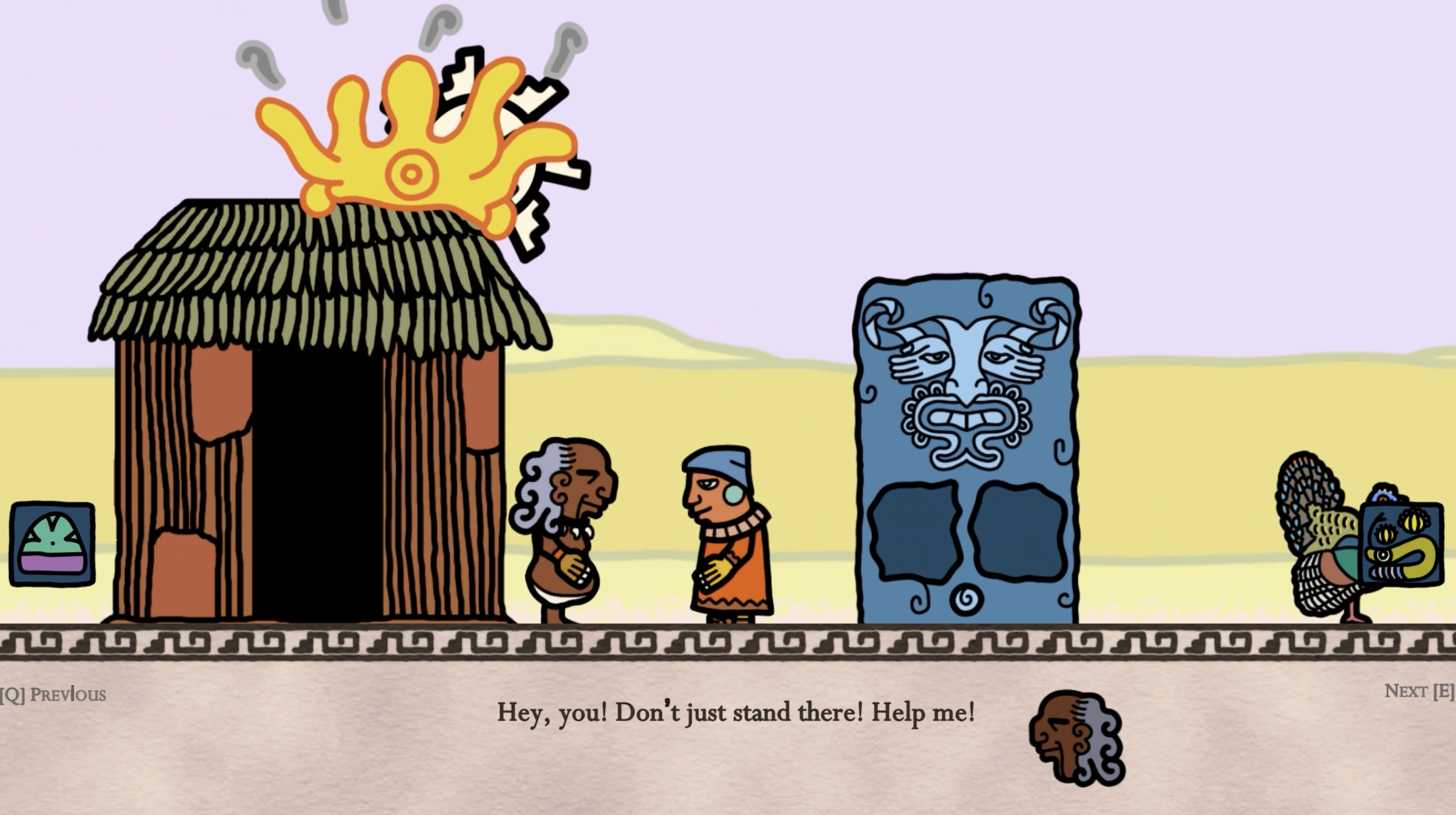

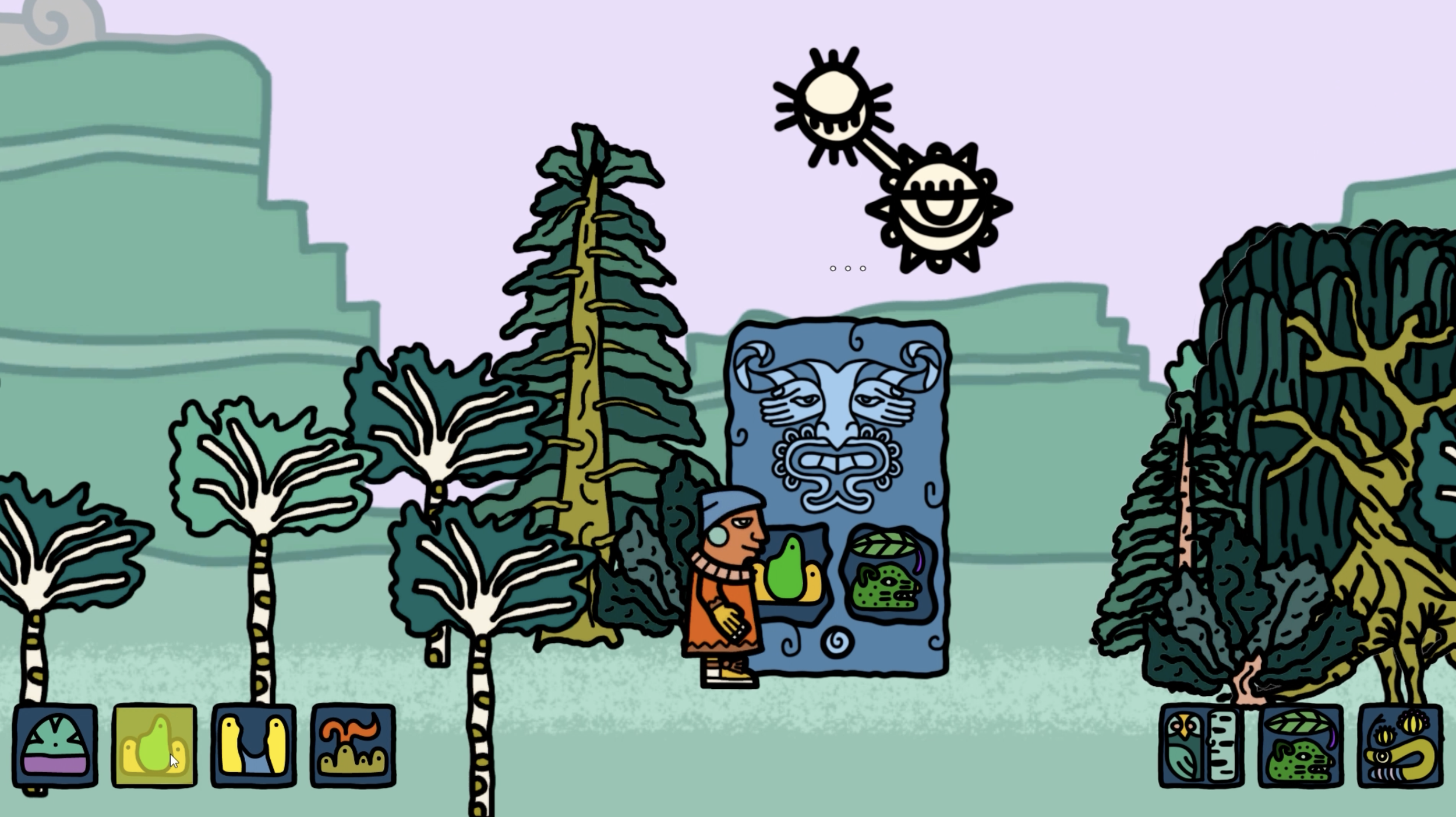
In this new world, places exist as limited entities. They are spaces, not simply defined by regions, zones, or biomes, but rather by a combination of their landscape (geography) and biome (flora), as well as the temporal Era (Sun) that they exist in.
The level design is made of 64 mini-levels that are individually defined by three layers: Landscape (X), Biome (Y), and Sun (Z). The player navigates across the levels using a combination of X + Y + Z by placing glyphs for Landscapes and Biomes on the Waystone to be teleported to a location. A simple rule determines the Sun: it advances cyclically, and the number of Eras passed is determined in each instance by a sum of the glyphs’ value in the Adsitt Std.
Different quests and events happen in selected locations, as shown in the image on the left.
Landscapes (X): flatland, mesa, valley, and volcano. The shape of the background indicates the landscape (the X-axis we are in).
Biomes (Y): arid (yellow), desert (red), rainforest (green), and deciduous forest (blue). The flora and the colour of the background indicate the biome (the Y-axis we are in).
Suns (Z): there are four Suns in the sky, inspired by the Nahua mythological concept of the Five Suns (Aguilar-Moreno, 2006).

